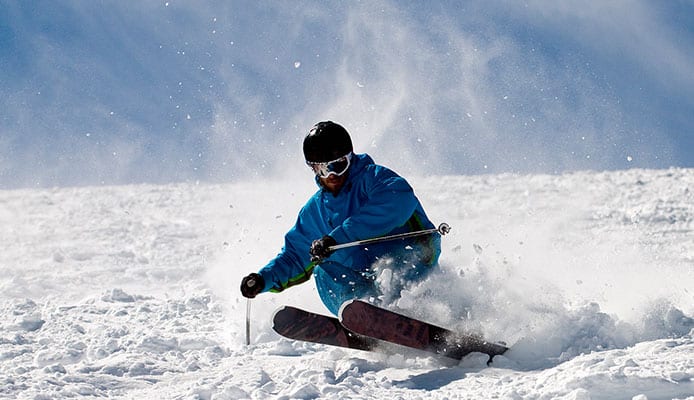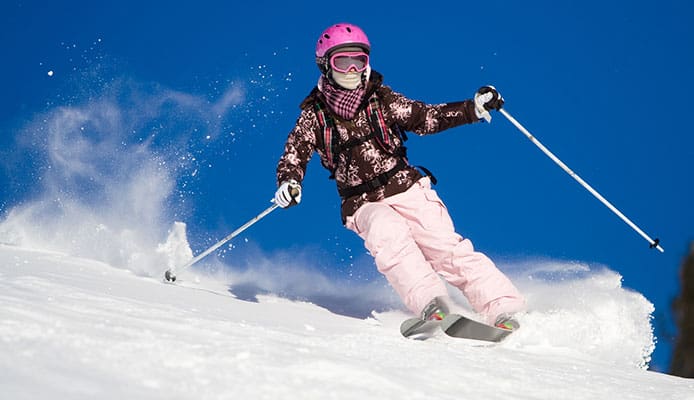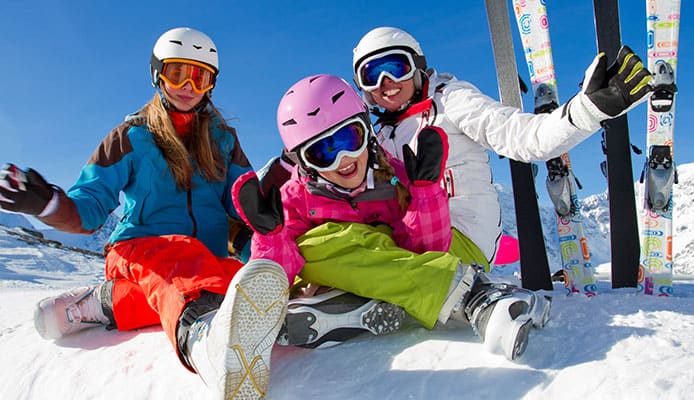-
1.
-
2.
-
3.
-
4.
Getting a pair of comfortable ski boots that will fit snugly to your feet will not only enhance your performance on the slopes, but they will keep you going for longer too. Whether you are a seasoned pro or you’re looking to buy your first ski boot, it’s crucial to get a pair that matches your feet shape. Naturally, people with wide feet have a more difficult time choosing the best wide ski boots.
No matter your ability level, a comfortable boot is an absolute necessity. If the boot is too narrow for you, it will truly ruin your day. Not only that, but an ill-fitting boot also runs the risk of not properly transferring energy to your skis and thereby significantly harming your performance. Amid this doom and gloom, the welcome news is that we have compiled a list of the best wide ski boots for people with wide feet. So, without further ado, let’s get to the list:
OUR TOP PICK
Salomon X Access 60 Ski Boots For Wide Feet
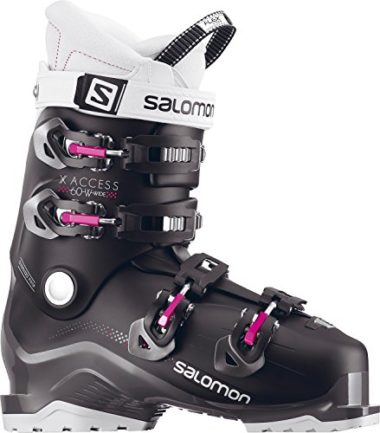
- What Makes This Ski Boot For Wide Feet Stand Out
- Made out of high-grade durable material
- Guarantees protection and comfort
- Versatile and adjustable to multiple weather conditions
- An excellent choice for wide footed skiers
Flex: 60
Size: 24.5
Color: Black
Last: 104
Weight: 3 pounds
EDITORS CHOICE
Salomon X Access 70 Ski Boots For Wide Feet

- What Makes This Ski Boot For Wide Feet Stand Out
- Highly comfortable and affordable
- One of the best choices for beginner to intermediate level skiers
- Incredibly versatile in multiple conditions
- Durable, designed for years of use and enjoyment
- An excellent choice for skiers with wide feet
- Can be used both by men and women
Flex: 70
Size: 31.5
Color: Black
Last: 104
Weight: 3.2 pounds
BEST VALUE
Rossignol Kelia 50 Ski Boots For Wide Feet
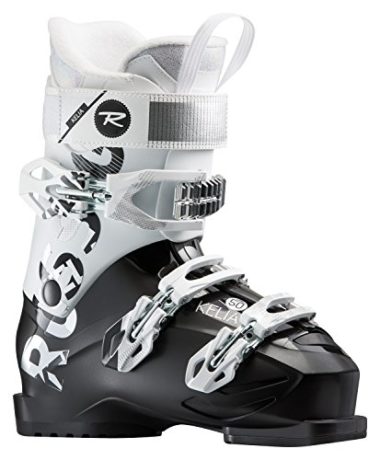
- What Makes This Ski Boot For Wide Feet Stand Out
- Delivers excellent quality for the price
- Soft and comfortable insides
- Maximizes power transmission on the slopes
- Has fine details which improve comfort and warmth
- Adjustable buckles
Flex: 50
Size: 22 – 25
Color: White
Last: 104
Weight: 2.5 pounds
Salomon X Access 80 Ski Boots For Wide Feet
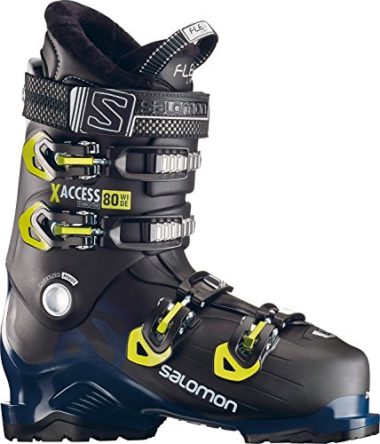
- What Makes This Ski Boot For Wide Feet Stand Out
- Reliable under any weather conditions
- Customizable for a wide variety of feet sizes and shapes
- A fine balance between comfort, performance, and price
- Delivers excellent energy transfer & precision when needed
- Guarantee high performance for expert skiers
Flex: 80
Size: 25.5 – 30.5
Color: Black
Last: 104
Weight: 3.4 pounds
Tecnica Ten HVL 70 Ski Boots For Wide Feet
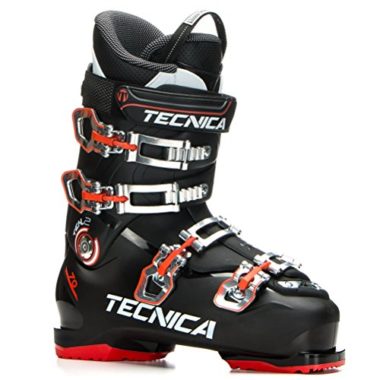
- What Makes This Ski Boot For Wide Feet Stand Out
- Manufactured out of a highly durable material
- Specifically modified for wide feet
- One of the best choices for advanced intermediate skiers
- Highly responsive on the slopes
Flex: 70
Size: 26.5 – 30.5
Colors: Black, red
Last: 106
Weight: 3 pounds
Nordica Sportmachine 65 Ski Boots For Large Feet
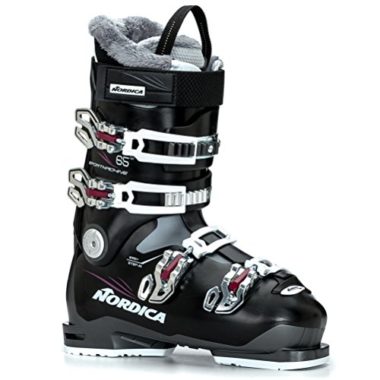
- What Makes This Ski Boot For Wide Feet Stand Out
- One of the most comfortable pairs on the market
- Meticulously designed
- Uses shell reinforcements that improve energy transfer towards your skis
- Keeps you secure and safe on the mountain all day long
- Perfect for advanced skiers
Flex: 65
Size: 26, 26.5
Colors: Black, purple
Last: 102
Weight: 2.5 pounds
Rossignol Alias 120 Ski Boots For Large Feet
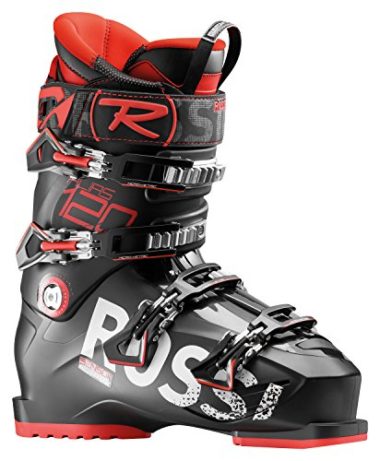
- What Makes This Ski Boot For Wide Feet Stand Out
- Boot warmers are pre-installed
- TwinFrame reinforced shell design
- Last expands up to 106 millimeters
- Customizable 3D women-specific boot liner
- Oversized pivot for an improved power transfer
Flex: 120
Size: 31.5
Color: Black
Last: 104
Weight: 6 pounds
Dalbello Kyra 70 Ski Boots For Large Feet
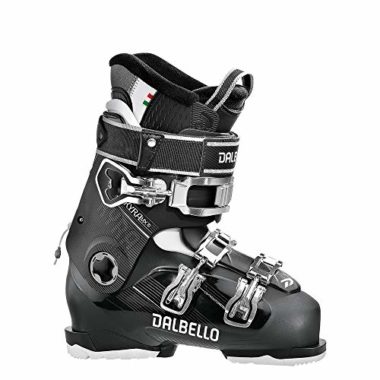
- What Makes This Ski Boot For Wide Feet Stand Out
- Comfortable, cozy, and high-performing
- Keeps the warmth inside of the boot
- Ensures long-lasting durability and versatility
- Amazing fit and stylish design
Flex: 70
Size: 24.5
Color: Black, multi
Last: 100
Weight: 2.5 pounds
How To Choose The Best Ski Boots For Wide Feet – Buying Guide
Purchasing the best ski boots for large feet is one of the most crucial pieces of equipment you should consider when hitting the slopes. Getting a great pair of ski pants and a ski jacket will help you a lot too. The ski boots of your choice don’t need to be overly stiff or overly soft. Consider your budget and how much you ski; there is no need to get an expensive boot if you only ski a handful of days a year. In addition to the price, there are other crucial factors you should consider when choosing the best ski boots for wide feet for you.
Flex
The flex rating of a boot refers to how difficult it is to flex the boot forward. It tells you how stiff the boot will feel. Many factors determine what boot flex is appropriate for you, including your ability, weight, skiing style, as well as personal preference. The higher the flex number, the harder the boot is to flex forward, and in turn, the stiffer it feels. In general, beginner skiers should get more out of a softer flexing boot, while advanced and more aggressive skiers will greatly appreciate a boot that is harder to flex.
Type
Ski boots can be divided into four basic different types. Each type has its unique pros and cons that either help or hinder the skier in the skiing genre he/she prefers.
Alpine ski boots are the best ski boots. They are made with the intention of skiing in resorts where a cable car lifts you to the top of a slope and you simply need to navigate down.
Cross-country ski boots are best used for a combination of skiing styles. These styles include everything from racing and touring to gliding through thick snow. To accommodate the differences in terrains and expected boot performance, the heels of a cross-country ski boot do not connect to the ski; instead, they hang free so that you can move by hanging forward.
You might also be interested in:
Telemark ski boots are made for uniquely riding down a slope. Each turn is made with a side step and movement of the knee down to the ski. To accommodate this technique, these ski boots feature a binding that locks down the front of your foot and has an adjustable cable on the back that can be loosened for rolling terrain and tightened once again to keep your heel in position for downhill skiing.
Design
The design of a ski boot for large feet should not determine your choice. Look for other factors, such as comfort, warmth, durability, and performance, but not style and design. Even when looking for design, try to look for specific features in the boot. These include buckles and strap systems. The only thing about design that you should worry about is having a good buckle system that will improve your performance.
Male vs. Female
Since there are differences in the male and female bodies, it is only natural to have differences in the ski gear & equipment they wear. The prime difference in men’s and women’s wide feet ski boots is the flex rating. There are general recommendations and numbers that you should look for when choosing the flex rating for your boot. Below are the basic ranges that will probably serve you right if you’re not too familiar with the details:
Related Review: Women Ski Boots
Men’s Flex Ratings:
- Beginner 60 – 80
- Intermediate 80 – 110
- Advanced 110+
Women’s Flex Ratings:
- Beginner 50 – 60
- Intermediate 60 – 85
- Advanced 85+
Last
Footbed width, referred to as last, is another crucial specification for ski boots. This measurement is based on the width of the forefoot and listed in millimeters. Most manufacturers make ski boots with varying lasts to accommodate those with narrow, average, and wide feet. Some models are made with multiple last options. It’s important to get the right part of the fit because side-to-side motion is a given when descending on a hill, and a boot that’s too loose around the sides of your feet will negatively affect your performance.
- Narrow: 97 – 98mm
- Average: 100 – 102mm
- Wide: 103mm+
Related Post: Ski Boot Size Chart
FAQs
Q: What Is A Wide Ski Boot?
Since people have differing foot shapes and sizes, it’s only natural for manufacturers to design boots in different widths. A ski boot for large feet is a ski boot specifically designed to make wide footed skiers comfortable since they are the ones that often have problems finding a pair that fits properly.
Q: How Do I Know If My Boots Are Too Narrow?
If you are wearing overly narrow boots you might feel that the edges of your feet are being uncomfortable squeezed; or even worse, you might have aches and pains across the foot. Some people even report having a burning sensation around the forefoot area. To check if your feet are too wide for your boots, measure your feet and measure the width of your ski boot liner and shell, minus the width of the material. Your foot should have room to sit within that space without being squeezed or your boots are too narrow for you.
Related Review: Ski Boots For Narrow FeetQ: How To Adjust Ski Boots?
If you purchase a pair of boots that are comfortable for you, you will not feel the need to adjust anything. Be mindful, however, that you might need some arch support rather than wider boots. Before going out and buying new boots, try to stabilize your foot by using a custom footbed with arch support. A proper footbed will evenly re-distribute your weight across the foot and reduce stress on the feet, ankles, and knees
Globo Surf Overview
As you have probably seen, a comfortable pair of ski boots will be an essential part of your ski gear equipment list. A properly fitting pair of ski boots will keep your body stable and effectively transfer power to your skis. Also, properly fitting ski boots will make your feet feel comfortable and warm.
Luckily, you now have all of the information you need. Our buying guide is based on the best wide ski boots and you will never be wrong if you purchase one of the boots on our list. Find the one that suits your needs the best, allowing you to fully enjoy your time on the slopes


